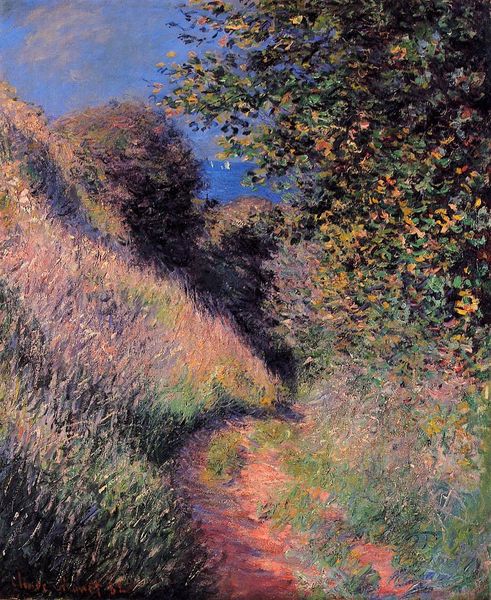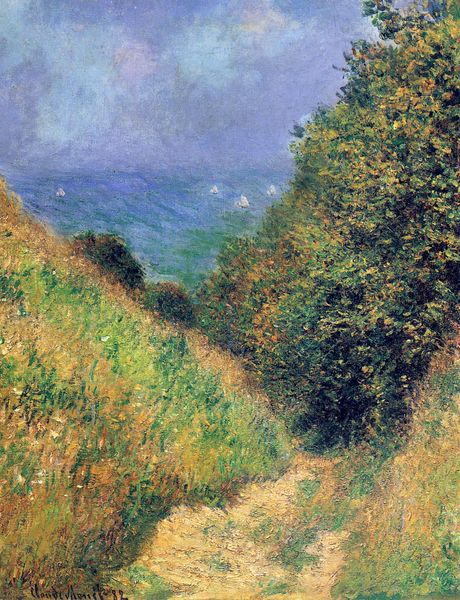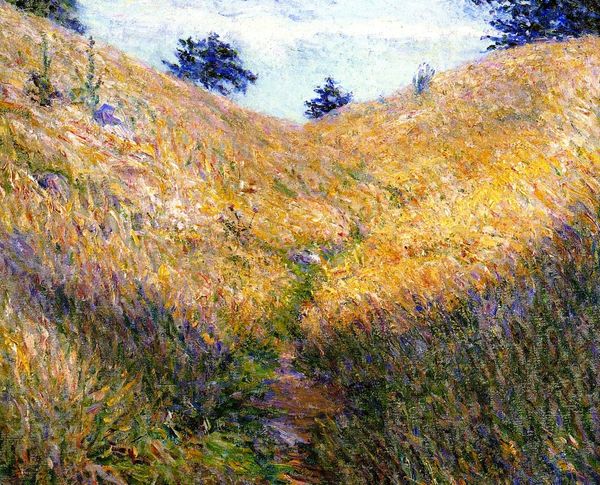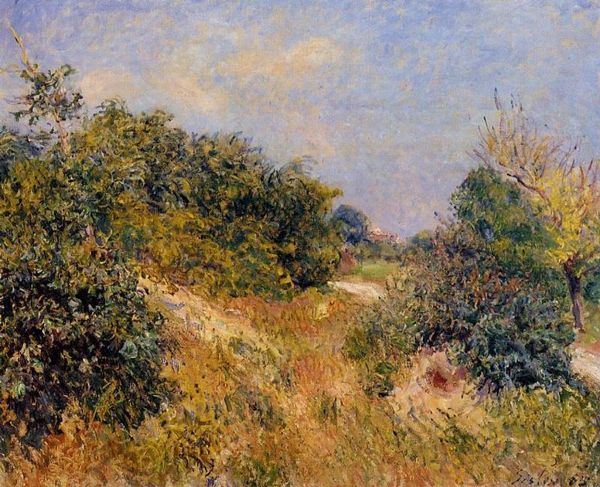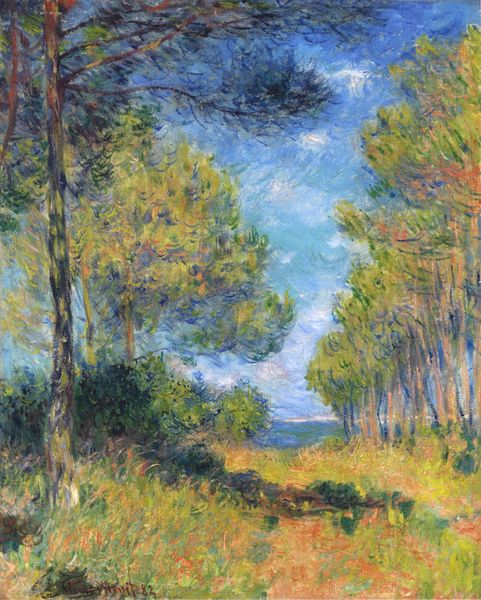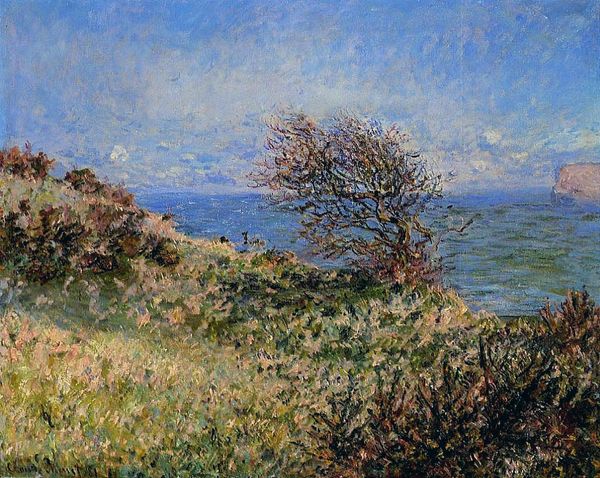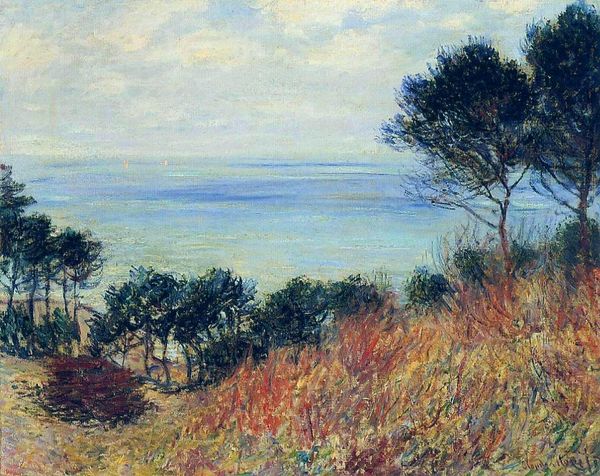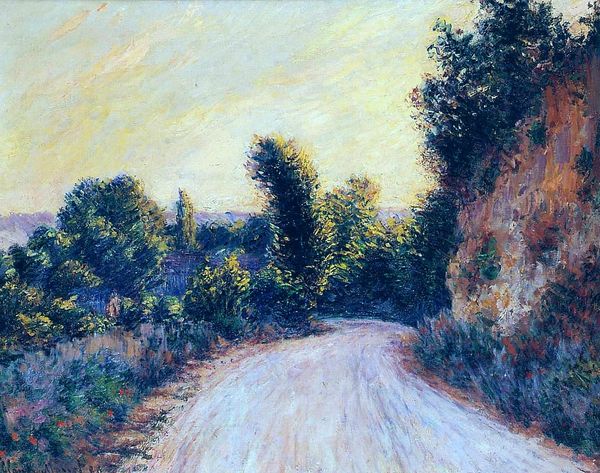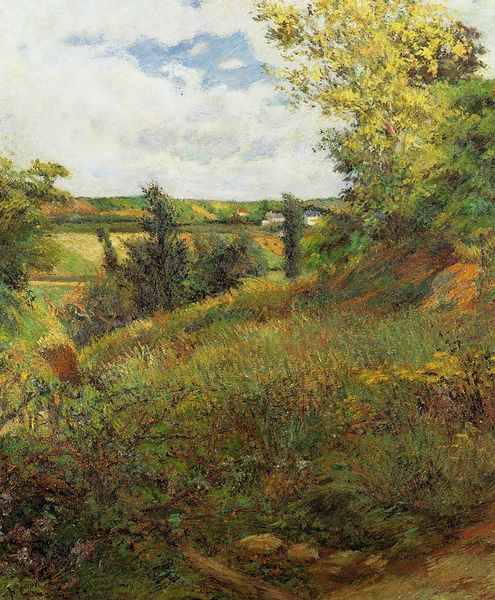
painting, plein-air, oil-paint
#
painting
#
impressionism
#
plein-air
#
oil-paint
#
landscape
#
impressionist landscape
#
nature
#
oil painting
#
seascape
#
modernism
Copyright: Public Domain: Artvee
Editor: So, this is Claude Monet's "Road at La Cavée, Pourville," painted in 1882, using oil on canvas. It's... very green and almost aggressively bright. I'm struck by how the path seems to draw you in, but it also feels slightly claustrophobic, hemmed in by the foliage. What do you see in this piece? Curator: The path indeed becomes a visual thread, a recurring motif that has been seen throughout history, from pilgrimages to introspective journeys. Notice how Monet frames the sea – traditionally a symbol of the infinite – within the intimate space of the road. Does that confinement add to that feeling of claustrophobia? Editor: I think so! The bright wildflowers almost feel like they're closing in rather than offering a welcoming scene. Curator: Brightness, however, does not always imply happiness; the high-key colors could signify a yearning for something just out of reach. These aren't manicured flowers of a garden but the unruly wildflowers – each symbolizing resilience. Consider how their short lives echo our own. Does this change the reading, even slightly? Editor: That's a fascinating way to look at it. I was so focused on the composition that I hadn't really considered the wildflowers as symbols of something bigger. It's like he's captured a fleeting moment of intense life. Curator: Exactly! The symbols and how they're staged together tell us so much about cultural values and ways of looking at the world. Editor: I didn't realize how much depth a seemingly simple landscape could hold. Thanks! Curator: A landscape it may seem but truly, it holds an emotional story of the ephemeral human experience!
Comments
No comments
Be the first to comment and join the conversation on the ultimate creative platform.
